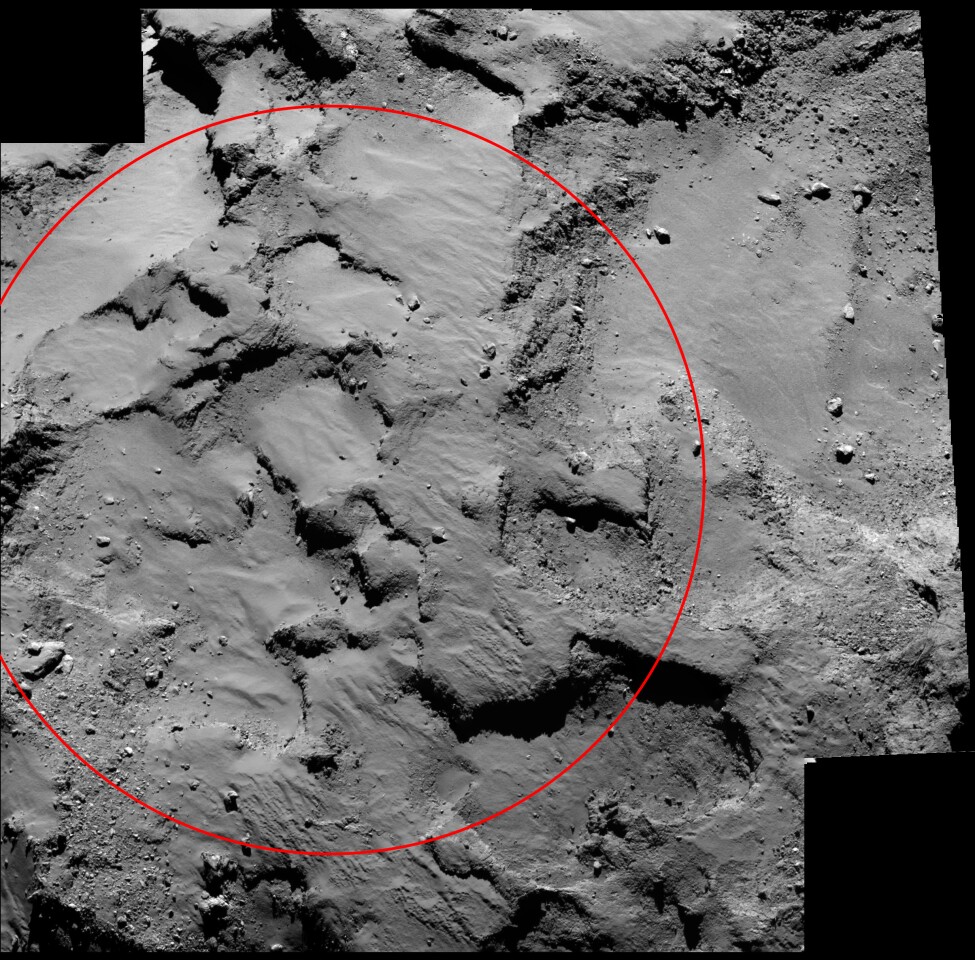Following an exhaustive scientific analysis, mission operators at the ESA have confirmed Site J as the primary landing location for Rosetta's Philae lander. If all goes to plan, Nov. 12 will be a historic first for the human race, as we expand our scientific empire to a new and hostile territory with the first-ever attempted soft landing on a comet.
Site J had already been tentatively selected as the primary landing site for the Philae lander, representing as it did the best trade-off between mission safety and potential scientific output. The confirmation of site J as the primary location will allow mission operators at the ESA to work in the context of a confirmed time-line of events leading up to the landing attempt.
The news of the confirmation came soon after the ESA released arguably the greatest selfie of all time. Shot from Philae herself, the image features one of the spacecraft's twin 16 m (52 ft) solar panels, with comet 67P/Churyumov–Gerasimenko (67P) featuring prominently in the background against the harsh blackness of space. The image was created by combining two exposures captured by the spacecraft's Comet Infrared and Visible Analyser (CIVA) instrument.

Once successfully deployed onto the surface of the comet, CIVA will act as one of 10 instruments that the lander will use to make its long journey worthwhile, collecting data on the comet in an unprecedented level of detail. CIVA is comprised of a visible/infrared microscope imager/spectrometer, combined with seven micro-cameras arrayed around the upper section of the lander. The celestial selfie is the last image to be returned by Philae prior to its Nov. 12 separation from Rosetta.
The following somewhat confusing but ultimately entertaining video, courtesy of the ESA, highlights the historic and ambitious nature of the Rosetta mission.
Source: ESA






